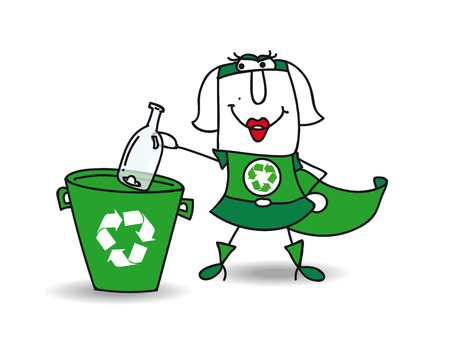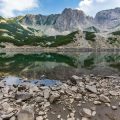1. Understanding the Plastic Problem in Outdoor Recreation
The Impact of Single-Use Plastics on America’s Trails
When we hit the trail for a day hike or a weekend backpacking trip, staying hydrated is a top priority. For many, this means grabbing bottled water or sports drinks, which are easy to carry and toss once empty. However, this convenience comes at a cost to our environment. Single-use plastic bottles are one of the most common forms of waste found along hiking trails and in natural parks across the United States.
Why Plastic Waste Is a Big Deal Outdoors
Plastic doesn’t break down easily—instead, it can stick around for hundreds of years. This means every bottle left behind or accidentally dropped becomes a long-term problem for wildlife and ecosystems. Animals may mistake plastics for food, leading to injury or death, while microplastics can contaminate soil and water sources used by both people and wildlife.
Single-Use Plastics: A Snapshot
| Item | Average Use Time | Decomposition Time | Common Trail Issues |
|---|---|---|---|
| Plastic Water Bottles | A few hours | 450+ years | Litter, wildlife hazards |
| Snack Wrappers | A few minutes | 20-30 years | Litter, pollution in streams |
| Plastic Bags | A few minutes/hours | 10-20 years | Easily blown off trail, entanglement risks for animals |
The Role of Responsible Trail Use in Sustainability
Caring for our trails goes beyond simply enjoying the view. When we pack out what we bring in and look for ways to reduce single-use plastics, we help protect these special places for future generations. Choosing reusable water bottles or hydration systems is one way hikers can make a big difference—less trash on the trail means cleaner parks and safer habitats for all creatures.
2. Choosing Reusable Water Bottles and Hydration Systems
When it comes to environmentally friendly hydration, choosing the right reusable water bottle or hydration system is key for American hikers. Not only do these options help reduce single-use plastic waste on the trail, but they also provide long-lasting durability and convenience for every adventure.
Popular Reusable Hydration Options
There are several tried-and-true brands loved by hikers across the U.S. Here’s a quick comparison of some favorites:
| Brand/Type | Main Features | Best For |
|---|---|---|
| Nalgene (Water Bottle) | Virtually indestructible, wide mouth for easy cleaning, BPA-free plastic, affordable | Backpackers who want simplicity and reliability |
| Hydro Flask (Water Bottle) | Stainless steel, double-wall insulation keeps drinks cold or hot for hours, many sizes/colors | Hikers who want temperature control and style |
| CamelBak (Hydration Reservoir) | Hands-free drinking with a hose, fits inside most backpacks, lightweight and convenient for on-the-go sipping | Trail runners, cyclists, or anyone who prefers not to stop for a drink |
The Benefits of Going Reusable
- Durability: These bottles and reservoirs are built to withstand rough trails, drops, and everyday use. You won’t need to replace them often.
- Convenience: Modern designs make them easy to carry, fill, clean, and use—especially with features like wide mouths or integrated straws.
- Sustainability: Using one bottle all season (or for years!) means less plastic waste in America’s beautiful parks and wilderness areas.
Tips for American Hikers
- Pick a size that fits your pack and matches your hydration needs. For long hikes in hot weather, bigger is usually better.
- If you love ice-cold water on summer trails, insulated bottles like Hydro Flask are a solid choice.
- If you prefer hands-free hydration while moving fast, CamelBak-style reservoirs are super convenient.
- Add a carabiner or paracord loop to your bottle so you can clip it onto your backpack for easy access—an old-school trick many seasoned U.S. hikers swear by!
![]()
3. Water Filtration and Purification on the Go
When youre out on the trail, staying hydrated is a top priority—but it doesn’t have to mean hauling single-use plastic bottles. In fact, there are eco-friendly ways to get safe drinking water straight from nature, while keeping plastic waste to a minimum. That’s where portable water filters and purifiers come in.
Why Choose Portable Filters and Purifiers?
Portable water filters and purifiers let you refill your bottle or hydration pack from streams, lakes, or rivers along your hike. Instead of packing in all the water you’ll need—often in disposable bottles—you can safely drink straight from natural sources. This not only lightens your load but also helps reduce plastic waste on the trail.
Popular Options for Trail-Goers
Some tried-and-true favorites among American hikers include LifeStraw and Sawyer Squeeze. Both options are lightweight, easy to use, and highly effective at removing bacteria and parasites from untreated water.
| Product | Main Features | Best For |
|---|---|---|
| LifeStraw | Straightforward straw design; drink directly from the source or fill a bottle; no batteries required | Day hikes, emergencies, solo hikers |
| Sawyer Squeeze | Attachable to standard bottles or included pouches; squeeze water through filter; longer lifespan with proper care | Backpacking, group hikes, refilling multiple times |
How to Use Them Responsibly
Using these filters is simple: just collect water from a flowing stream or clear lake (avoid stagnant pools), attach the filter as directed, and drink up! Always follow Leave No Trace principles—don’t contaminate water sources with soap or trash, and stay mindful of your impact on the environment.
Benefits for You—and the Planet
By using portable filtration systems like LifeStraw or Sawyer Squeeze, you’re not just looking after your own health—you’re also doing your part to keep America’s wild spaces clean and free of plastic litter. It’s a win-win for adventurers and the environment alike!
4. Community Initiatives and ‘Leave No Trace’ Principles
Understanding Leave No Trace Ethics
In the U.S., “Leave No Trace” is more than just a phrase—it’s a set of outdoor ethics that guide hikers, campers, and all outdoor lovers to minimize their impact on nature. When it comes to staying hydrated in an environmentally friendly way, the Leave No Trace principles encourage everyone to pack out all trash, avoid single-use plastics, and respect natural spaces for future generations.
Key Leave No Trace Principles for Hydration
| Principle | How It Relates to Hydration |
|---|---|
| Dispose of Waste Properly | Take your empty bottles or hydration packs home—never leave them on the trail. |
| Plan Ahead and Prepare | Bring reusable water bottles or hydration systems to avoid single-use plastic waste. |
| Respect Wildlife | Avoid leaving behind any trash or containers that could harm animals. |
Local Trail Clean-Ups: Getting Involved
Many communities across the U.S. organize local trail clean-ups where volunteers gather to remove litter—including plastic bottles—from popular hiking areas. These events not only keep trails beautiful but also inspire others to reduce plastic waste and use more sustainable hydration options. Participating is easy: check with local parks, outdoor groups, or social media pages to find upcoming events near you.
Benefits of Joining Trail Clean-Ups
- Meet like-minded outdoor enthusiasts in your area
- Help protect local wildlife and plant life from plastic pollution
- Set a positive example for others on the trail
- Learn about new environmentally friendly gear and practices from experienced hikers
Community-Led Efforts on Public Lands
Across America’s public lands—like national parks, forests, and state trails—community-led programs are making a difference in reducing plastic waste. Some parks have installed refill stations for reusable water bottles, while others run educational campaigns about the impact of single-use plastics. Outdoor retailers often partner with non-profits to sponsor events and provide resources for hikers who want to make eco-friendly choices.
Examples of Successful Initiatives:
- Reusable Bottle Refilling Stations: Found in many U.S. national parks, these stations make it easy to hydrate without creating waste.
- Pledge Programs: Organizations encourage visitors to pledge to “pack it in, pack it out” and share their commitment online.
- Volunteer Ranger Programs: Volunteers educate fellow hikers about reducing waste and following Leave No Trace principles.
Together, these efforts help keep America’s trails clean and beautiful—so everyone can enjoy the outdoors while protecting our environment.
5. Tips for a Zero-Waste Hiking Adventure
Pack Smart: Choose Reusable Containers
When preparing for your hike, skip the single-use plastic bags and opt for reusable containers or beeswax wraps for your snacks and meals. Not only do these options keep your food fresh, but they also prevent unnecessary trash from ending up on the trail. Stainless steel, silicone, and BPA-free plastic containers are all great choices and can be used trip after trip.
Hydrate Sustainably
Bring a durable, refillable water bottle or hydration reservoir instead of disposable bottles. Many popular hiking spots in the U.S. now have refill stations at trailheads or visitor centers. If you’re heading somewhere remote, pack a lightweight water filter or purification tablets so you can safely use natural water sources along the way.
Embrace “Pack-In, Pack-Out” Principles
In American hiking culture, “pack it in, pack it out” is a golden rule. This means whatever you bring into nature—including wrappers, fruit peels, and biodegradable waste—should leave with you. Carry a small trash bag (reusable if possible) to collect your own waste and even pick up litter left by others.
Zero-Waste Hiking Checklist
| Item | Why It’s Better |
|---|---|
| Reusable Water Bottle | Cuts down on single-use plastic bottles |
| Food in Reusable Containers | Keeps food fresh and reduces packaging waste |
| Cloth Napkin/Small Towel | Replaces paper napkins or wipes |
| Reusable Utensils | No need for disposable cutlery |
| Personal Trash Bag | Makes it easy to carry out all waste |
| Water Filter/Purification Tablets | Enables safe refilling without bottled water |
Foster an Eco-Friendly Hiking Community
You can make a bigger impact by encouraging friends and fellow hikers to follow zero-waste practices. Share tips before group hikes, organize clean-up days, or simply set an example by being mindful of your own habits on the trail.
Remember: Every Small Change Counts!
Together, these simple steps help reduce our collective footprint and protect the wild places we love for future generations.


